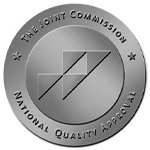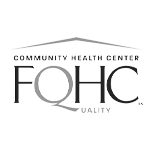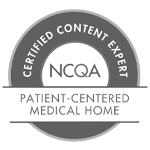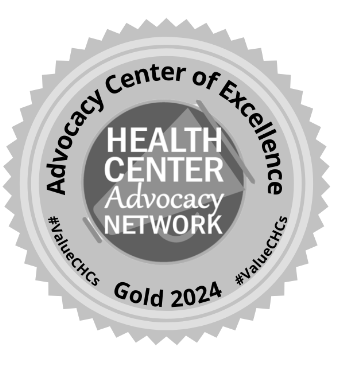
Sepsis is a dangerous infection that can affect anyone. If not treated quickly, it can result in serious illness and even death. Keystone Infectious Disease’s Medical Director, Dr. Raghavendra Tirupathi, and medical students studying under him, Nazia Nagi, Vaishnavi Gummalla, Aswin Chandrasekhar and Ishita Bhatnagar want to spread awareness in hopes of saving lives. Learn about the symptoms, treatment and prevention of sepsis in today’s Take Care article.
What is sepsis?
Sepsis is a serious and potentially fatal condition that occurs when the body has an overwhelming response to an infection. Normally, the immune system fights infections to keep you healthy, but in sepsis, the body’s response goes into overdrive and causes widespread inflammation that can damage tissues and organs. It often begins with infections in areas like the lungs, urinary tract, gastrointestinal system or skin.
Other causes include bloodstream infections (like from a contaminated IV), infections following surgery, infected wounds or even less obvious infections such as dental abscesses. Conditions like meningitis (infection of the brain lining) or endocarditis (infection of the heart lining) can also trigger sepsis. Essentially, any infection—whether caused by bacteria, viruses, fungi or parasites—has the potential to escalate into sepsis.
If untreated, sepsis can progress quickly, leading to organ failure, severe tissue damage or even death. It’s considered a medical emergency because early detection and prompt treatment are critical.
What are the symptoms?
Common signs of sepsis include clammy or sweaty skin, confusion, extreme pain or discomfort, fever, shivering or feeling very cold, mouth sores, neck stiffness, high heart rate, weak pulse and shortness of breath.
You should seek medical care right away if you suspect sepsis or have an infection that is not improving. Other warning signs include redness, swelling or warmth at the infection site, unusual fatigue, weakness or a general feeling of being unwell, difficult or painful urination or blood in urine, ear discharge, persistent vomiting, diarrhea or inability to eat or drink, and symptoms affecting multiple areas of the body such as widespread pain, chills or confusion.
Act early; don’t wait for symptoms to worsen. Early treatment with antibiotics and proper care can prevent infections from turning into sepsis.
Who is at risk?
Anyone can get sepsis, but it’s more common in people who: are under one year of age or over 65 years of age; are pregnant or postpartum; have weakened immune systems; have chronic conditions like diabetes, lung disease, kidney disease or cancer; or have had a recent severe illness, surgery or hospitalization
Can sepsis be prevented?
While not all cases are preventable, you can lower your risk by staying up to date on vaccinations, practicing good hygiene (like handwashing with soap and water for 30-60 seconds) and seeking prompt care for infections.
Another way to lower your risk is keeping cuts and scrapes clean and covered until they are healed and following any wound care instructions from your healthcare provider. A wound that is not properly cared for can become a breeding ground for harmful organisms to grow and spread. Most minor infections don’t lead to sepsis, but you should watch for worsening symptoms and seek help if they develop.
Is sepsis contagious?
Although sepsis itself is not contagious, the underlying infection can be. This is why vaccinations can lower your risk. Talk to your healthcare provider about which vaccines are recommended for you. These may include vaccinations for pneumonia, chickenpox, Hepatitis B and flu, among others.
How is sepsis diagnosed?
Your healthcare provider will make a diagnosis based on a physical exam and tests. They will evaluate your symptoms, especially difficulty breathing, fever, increased heart rate and low blood pressure. To confirm sepsis and identify its cause, they may perform tests to detect infections or signs of organ damage. These tests can include tests to find bacteria or fungi in your blood, urine, mucus or wound samples to pinpoint where the infection started and scans like X-rays or CT scans to look for hidden infections in areas like the lungs or abdomen. Other tests such as those for viral infections like COVID-19 or influenza may also be used.
What do I need to know if I am on chronic dialysis?
People with weakened immune systems, such as those with end-stage renal disease (ESRD) receiving chronic dialysis are at a higher risk. Sepsis is the second-leading cause of death in patients with ESRD and is one of the most serious and life-threatening complications in patients with chronic hemodialysis access.
If you know the warning signs you have a greater chance of preventing sepsis-related complications. In addition to the symptoms listed previously, people on chronic dialysis should watch out for complications at their dialysis site such as redness, swelling or discharge, abdominal pain, distention, vomiting and cloudy peritoneal dialysis fluid.
Ask your healthcare team about a fistula or graft for your dialysis treatment if you have a catheter. Catheter sites should always be kept clean and dry, and hemodialysis catheter sites should always be covered. Properly caring for your dialysis access site can greatly reduce your risk for infections.
What do I need to know if I have diabetes?
People who have diabetes are at higher risk of developing wounds and sores that don’t heal well, which could lead to sepsis. If you have wounds or sores that aren’t getting better and/or experience sepsis symptoms, contact your healthcare provider right away. Practicing good hygiene, closely monitoring any wounds and having regular checkups to make sure your blood sugar levels are under control can reduce your risk of infection.
What do I need to know if I have cancer?
Having cancer and undergoing certain treatments, such as chemotherapy, can put you at higher risk; so if you have symptoms of sepsis or infection, it is a medical emergency. Call your doctor or go to the emergency room immediately. It’s important that you say, “I have cancer and am concerned about infection and sepsis.”
Other ways to reduce your chances of infection include washing your hands often and asking others to do the same, avoiding crowded places and sick people, asking your doctor about recommended vaccines, using unscented lotion to keep your skin healthy and practicing good hygiene such as brushing teeth with a soft toothbrush and bathing or showering daily (unless your doctor tells you otherwise).
You should also carefully wash raw fruits and vegetables, cook meat and eggs thoroughly to kill any germs, use gloves for gardening and wash your hands immediately after touching an animal or removing its bodily waste (gloves should be worn for waste removal).
What should I expect during sepsis recovery?
Recovery is different for everyone, but many people experience fatigue and weakness, difficulty breathing, pain or discomfort at the infection site, hair loss, skin changes and cognitive or emotional changes like confusion, memory loss, anxiety and depression. These symptoms may improve within weeks but can last for months or longer. Long-term effects can include nerve pain or discomfort, organ damage and an increased risk for future infections.
To help your physical recovery, some tips include starting slowly with light activity and increasing intensity as tolerated, eating a well-balanced diet and following up with your healthcare team regularly.
For emotional or cognitive changes, having support is important. Talking to family, friends or support groups about your experience may be helpful. Professional therapists or counselors can help you with anxiety, depression or post-traumatic stress disorder. Journaling is a good way to document your concerns and track your progress.
The support of family and friends can also help during recovery. This can include monitoring progress, encouraging healthy habits like regular meals and fluid intake and providing emotional support.
For more detailed information, visit the CDC’s page on Managing Recovery from Sepsis.
Conclusion
If you or a loved one are showing signs of sepsis, take action right away. Be specific when describing your symptoms to a healthcare provider and mention any recent infections or hospitalizations.
Sepsis awareness saves lives. Share the signs, risks and ways to prevent sepsis with your friends and family. Health care professionals and those in public health also have an important role in spreading knowledge (www.cdc.gov has many free resources). By working together, we can make a difference in the fight against sepsis.
This article contains general information only and should not be used as a substitute for professional diagnosis, treatment or care by a qualified health care provider.
A national nonprofit organization, Sepsis Alliance, is dedicated to raising awareness and providing education about sepsis. Their mission includes equipping the public and healthcare professionals with life-saving information about recognizing and treating this medical emergency. Additionally, the organization offers a virtual support community, creating a space for patients, survivors, and their families to connect, share experiences, and find encouragement. Learn more about their resources and initiatives at Sepsis.org.
For more information about spreading awareness, visit the CDC’s Getting Ahead of Sepsis Toolkit page.




